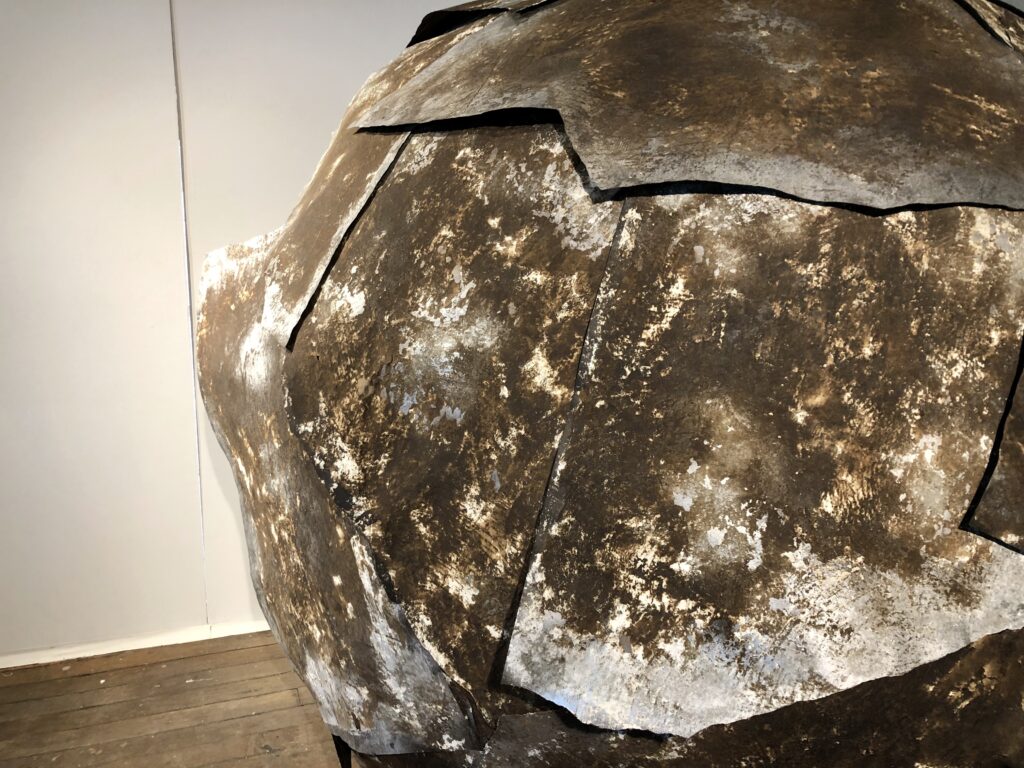
For the month of March, Rafael Bustillos has installed a large-scale circular sculpture “Diamond” by transforming deconstructed and repurposed paper that is both resilient and vulnerable. An exploration of space and material perception, his work uncovers the potential to create an alternative, silent language as a communication strategy to offer new forms of understanding and connection.
At its core, Bustillos’ work deconstructs the varying levels of material existence and humanity’s inherent ability to create and destruct. Outside of his sculptural practice, Bustillos works as an art therapist and educator. These practices continue to inform one another in his search to understand humanity and how we can better connect to one another.
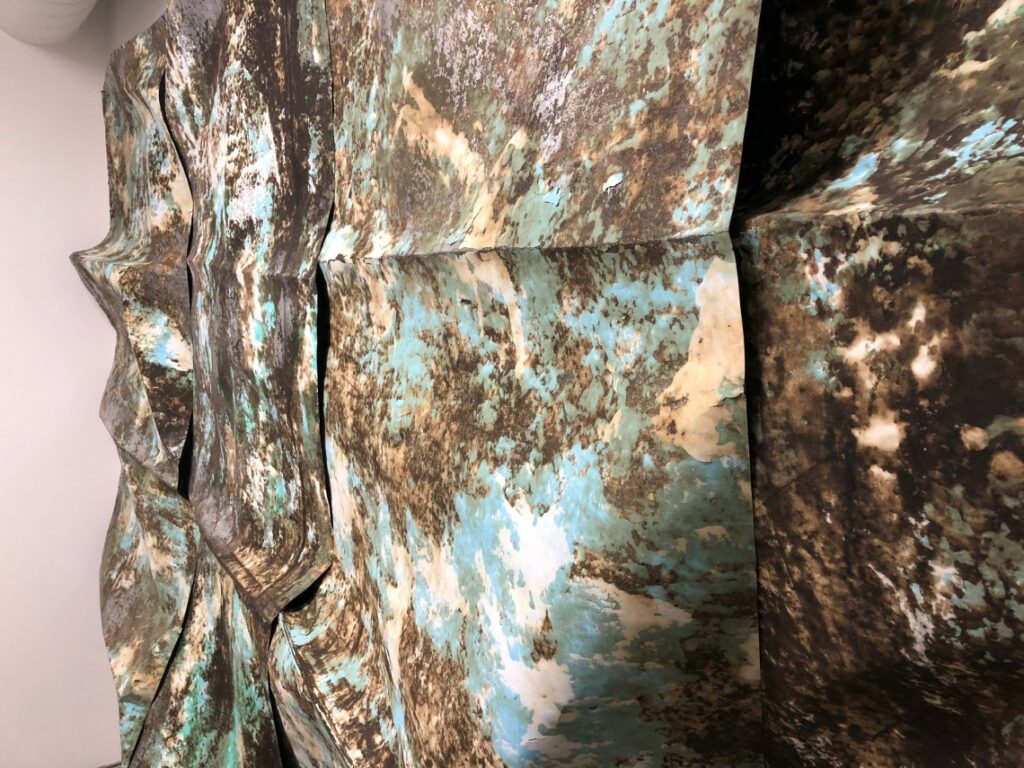
Sherwin Rio (Exhibitions Fellow): Can you talk to me about your recent shift from photography into painting and sculpture?
Rafael Bustillos (RB): I actually created sculpture before, but I believe the reason I’ve found comfort in photography was the concept of transcendence. I was photographing statues and everything that appeared to be in the process of transcendence.
It was through photography that I identified that everything I made was connected to a process of destruction and creation and I realized we participate in this process.
SR: You often cross the line between mediums– your sculptures are often painterly and I think your paintings are largely sculptural. Then again, you have paintings that are super painterly and sculptures that are super sculptural… Can you walk me through how you begin a new work?
RB: When I plan on working, for instance with ceramics, I don’t really think about incorporating the history of this medium into the outcome. It’s mostly an inspiration. I remember grabbing clay and being inspired. I let the hands speak through the experience. Whatever I use is channeled through the same field of investigation centralized around the dynamic between creation and destruction.
This idea invited me to do something more interactive, so for Utopic Entropy the main idea was for when people walked up to the sculpture contemplating the bear they would be destroying the floor beneath them, creating a new piece. Destruction was central a central element.
The bears themselves are nothing other than a symbol of different types of destruction; one is slashed, one has tumors, another one is disintegrating. It was important for me to bring this visceral aspect, hoping the unconscious would engage with the emotions, so that someone could simultaneously contemplate and be reminded about their presence through an act of destruction.
SR: Let’s talk about materiality. What do you mean by “materials speak a mute language” in your artist statement?
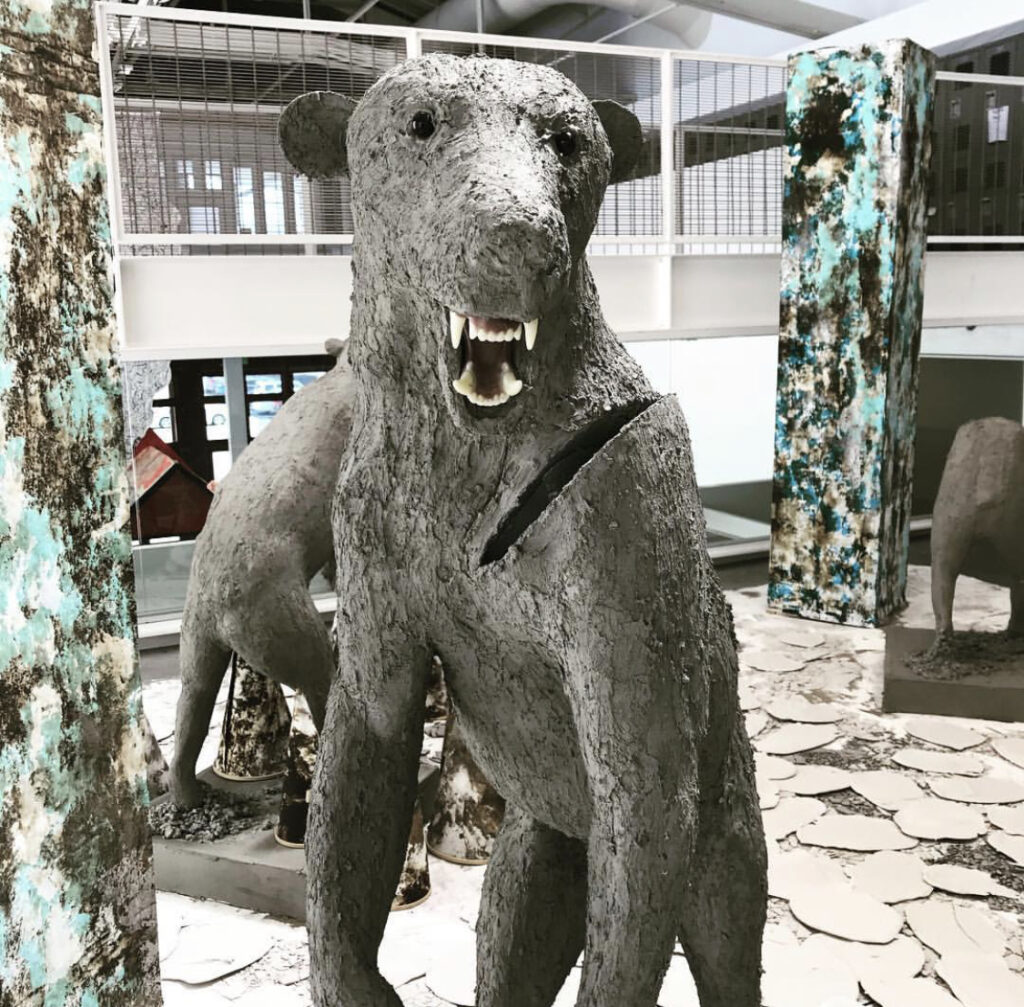
RB: We humans are conditioned to function in a certain way and the words that we listen to have so much power to exist. Everything that exists on this planet has its own agency and its ability to communicate with us.
Because dust is not just dust. In actuality, it has more life than we do. Those types of elements have existed longer than us and have their own purposes. We have been driven by fantasies, fetishes, and illusions that blind us from seeing that water, air, and materials have life and we just benefit from them by using them for self-serving processes.
However, we can only learn from how those materials communicate with each other in a very limited fashion since we don’t know that language. So the way I choose to describe it is as a mute language. But perhaps it’s not a language at all, maybe it’s just a different level of existence. I’m aiming to translate a different dimension of existence into our own way of seeing in life, into our own existence.
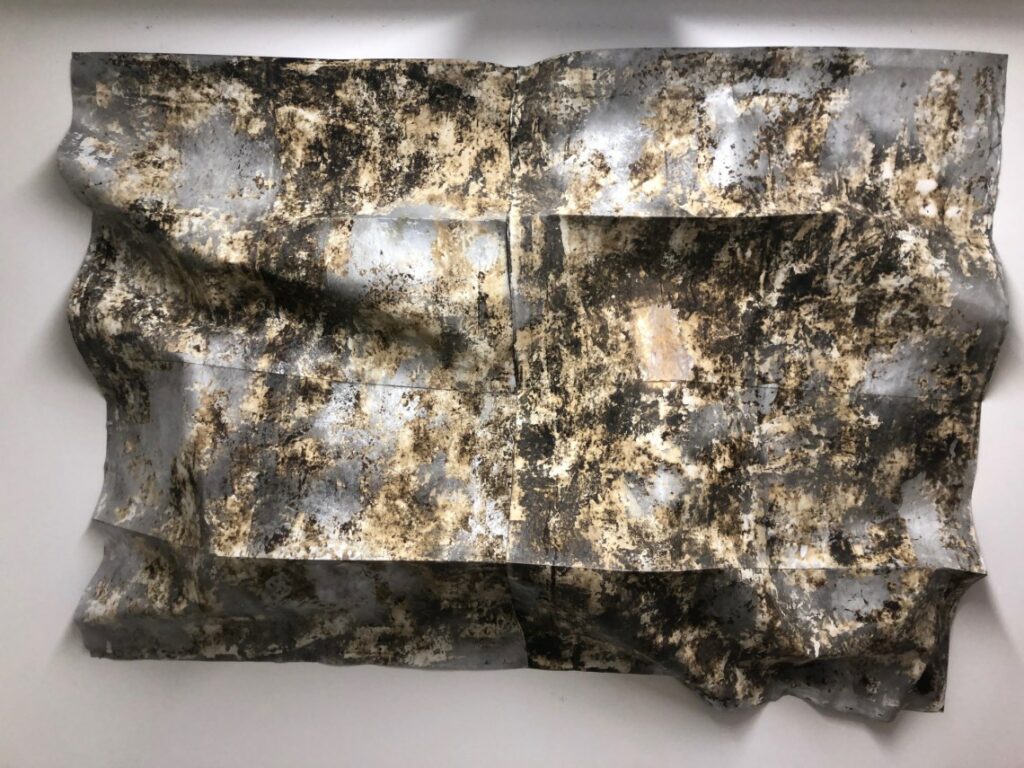
SR: Can you tell me more about the details and materials you use to manipulate the paper in Diamond? How do you experiment with illusion?
RB: The materials that I used to make this sculpture are materials that are commonly used to build and to repair homes. The purpose is to study how humans respond to illusions, as well as to study the agency to materiality. In order to achieve the texture of my paintings, I mimic the process of material disintegration. These materials allow me to explore the existence of humans and its connection to the existence of materials.
The use of illusions is an important part of my work. To me, illusions represent the energy that moves the engineered structure of human existences.
SR: How do you want viewers to interact with and view the work?
RB: Diamond is a part of a larger body of work. Therefore, for this particular piece, the viewer is only allowed to have an optical experience. However, the viewer will be allowed to move the piece when this one is shown in a site-specific setting.
Seduction is also an element. I’m always inspired to seduce the viewer. When you see something that is appealing, that activates your fetishistic impulse. You want to touch, smell, and feel because we have the agency to do it. It’s fascinating to see the reactions of people who react when they’re alone and then when they’re with others.
SR: Why is it important that the sculpture be immense and to overwhelm the Frank Ratchye Project Space?
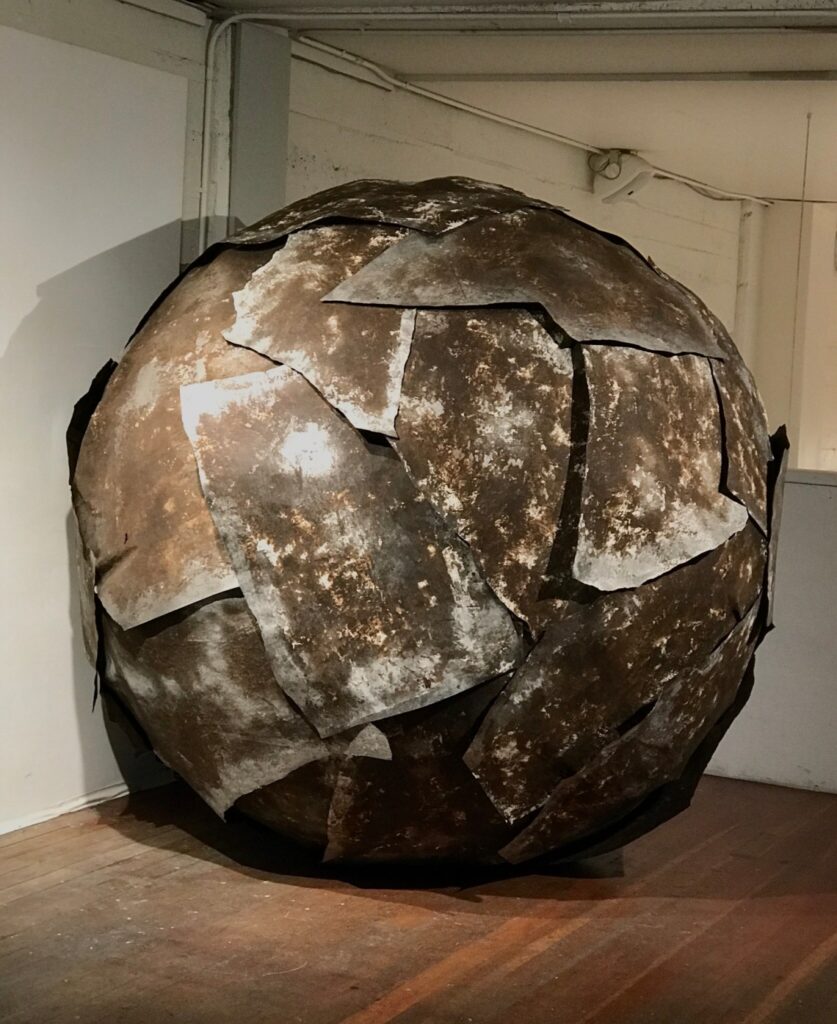
RB: The intention for me to crate large-scale work is to overwhelm the viewer’s presence. I have a tendency to create large-scale work because I seek opportunities that can highlight and give priority to the presence of materiality in the life of humans.
SR: What role does humor play here and it’s relationship to large scale sculpture?
RB: Humor plays a very import role in my work. I use humor as a tool that help digest a reality that tends to be covered by effects of illusion.
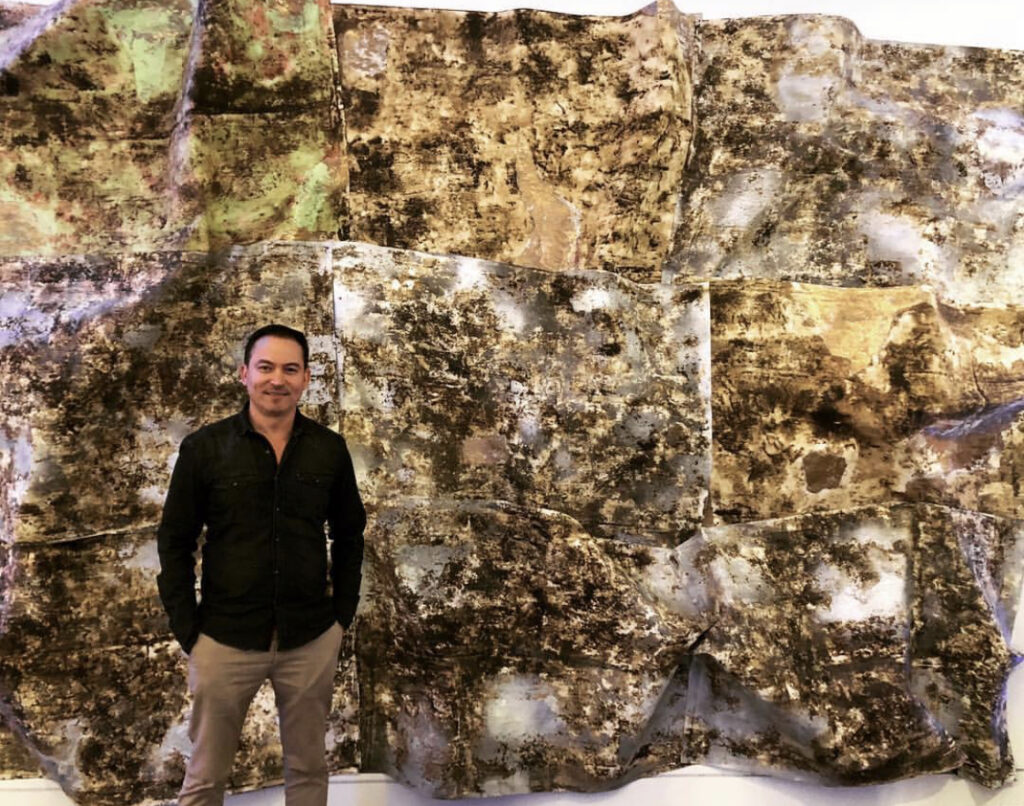
SR: I know we’ve spoken previously about the hardware store as being your art store. What are your favorite materials to use and what do you look for in a new material?
RB: I think my favorite material is the tar paper because it’s so resilient, it’s so vulnerable, and it’s also so durable. This connects so much with my topic of creation and destruction. I feel like I can make anything with it. I became familiar with building materials when I learned how to redesign and resurface fireplaces in Europe. The technique I learned was a technique used to recreate the look of old stone when there was no stone available. I was fascinated by the transformation of material.
SR: Riffing off that faux-stone design, can you talk to me about deception in your work? I find that often in your work, the lightest works are the ones that appear the heaviest.
RB: When I did my thesis on treating anger, I created a treatment plan that would help male adolescents who behaved abusively to their partners. I discovered in my research that aggression is caused by self doubt, fear, loneliness, and inferiority. They have to then be camouflaged with aggressive energy to maintain balance. So it’s rooted in low levels of self esteem. I think it’s interesting, those two polarizing effects that is very destructive. It’s a self-defense coping mechanism. No one deserves to be a victim.
SR: Does your previous experience in psychotherapy play an active role in your art making? For example with what you’re telling me now about deception and anger?
RB: I learned through psychotherapy that there was another side that was dancing with an understanding of philosophy and politics. What I owe to psychotherapy is an understanding of anger, rather than an understanding of tools to make something. It did help me understand that we can function in a polarized fashion. We have one end and another end, and both ends interact with each other.
SR: Lastly, talk to me about what you’re working on now as a Studio Artist?
RB: I’m teaching an after-school program for elementary students at Bryant Elementary through Root Division. The course is focused on teaching the students how to speak through art – that art is a language. Students are contemplating art as an outlet of expression and every day it gets stronger and stronger. It’s a wonderful thing.
